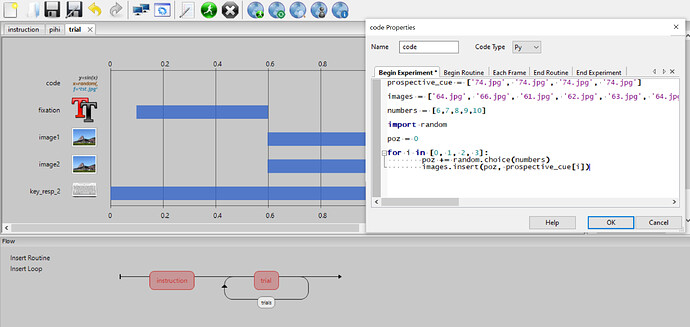Hi All,
I’m a beginner in programming and Psychopy. I’m working on a prospective memory task in Builder and came across a randomization issue which seems quite difficult to solve. I have 60 face pairs as stimuli, each appearing once in a random loop. Shortly, the task is to indicate with a key response whether the gender of the two faces is the same (‘right’) or not (‘left’). However, there is a specific face pair which has been learned before the gender discrimination task. If this face pair is seen, irrespective of gender discrimination, a third key must be hit (‘up’). Thus, beyond the 60 face pairs, I would like to add 4 of these specific (so called prospective) face pairs to the loop. The position of these prospective cues is crucial, because a) they should be semi-equally distributed throughout presentation and b) they should not be the first and/or last item being presented.
What I’ve done so far:
A condition file belongs to the loop, in which I manually coded all the pairs and the corresponding answers in advance (not that elegant; this was necessary, because the proportion of the certain face characteristics, e.g. sex, age, as well as answer types both need to be counterbalanced).
I’ve put a code component into the trial routine (‘Begin experiment’) which intends to say that there is a “gap” between each prospective cue with a randomly varying length. The list corresponds to one of the columns in the condition file. I’d like 6-10 trials between these cues, but I don’t want the distance to be the same across and within participants.
Results: No error messages, a running experiment, but no expected randomization.
I supposed that it was enough to include only one of the image lists in the code, but that might be the problem; perhaps the code is not appropriate.
Any comments would be appreciated!



